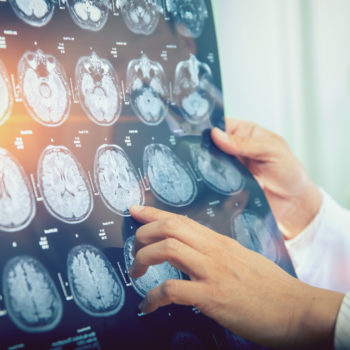A new study has been published in the scientific journal Brain, thanks to a group of researchers from the Department of Neuroscience and the Department of Biochemistry of the Mario Negri Institute for Pharmacological Research, in collaboration with the University of Insubria, and has highlighted a new and interesting link between the onset of Parkinson’s disease and dementia of Lewy’s bodies and the activation of the inflammatory response. According to the study, the latter would contribute significantly to cognitive impairment induced by particular protein aggregates (oligomers), while the presence or absence of the prion protein seems to be irrelevant. We talked about it with Professor Alberto Albanese, neurologist at Humanitas.
The investigation of the pathogenic role of oligomers
The data obtained, either in vitro or in vivo, contrary to those previously published by a group of Portuguese and German researchers, exclude the involvement of the prion protein in the toxicity induced by the oligomers of the alpha-synuclein protein that accumulate in the brains of patients. “Such evidence – says Gianluigi Forloni, head of the Department of Neuroscience of Mario Negri and coordinator of the study – contribute to increasing our knowledge on the mechanisms that underlie the functional changes then highlighted at the clinical level. This information is useful to guide therapeutic approaches that, in the context of neurodegenerative diseases such as Parkinson’s or Alzheimer’s, are particularly complex and still await effective solutions and able to act on the root causes of diseases. “The use of a simple experimental model – adds Gianluigi Forloni – such as the application of alpha-synuclein oligomers directly in the brain ventricles of experimental animals, developed in collaboration with Prof. Loredano Pollegioni of the Department of Biotechnology and Life Sciences of the University of Insubria, allows us to directly study the pathogenetic role of these aggregates that are found in the brains of the patients”.
The new role of neuroinflammation in the emergence of the diseases
“The exclusion of prion protein is important – according to Pietro La Vitola, PhD student at Mario Negri and first author of both publications – because it demonstrates how in the origin of neurodegenerative diseases, such as Alzheimer’s and dementias associated with Parkinson’s disease, there are common elements (oligomers, neuroinflammation) and elements of discordance. The prion protein, for example, in addition to being involved in so-called prion diseases, seems to play a role, albeit debated, in Alzheimer’s disease, but not in dementia associated with Parkinson’s disease. Our data show, in fact, how in vitro there is no direct interaction between the oligomers of alpha-synuclein and the prion protein and how the oligomers maintain their toxicity in animals without it.
The word of Prof. Albanese
“The study of prion diseases has revolutionized the knowledge on neurodegenerative diseases – commented Professor Albanese -. The prion protein is able to replicate, indeed to induce its replication, within the host cell. In this way, it spreads and extends in contiguity, creating progressive neurological damage. Recent discoveries on alpha sinuclein (which accumulates in Parkinson’s disease) and beta amyloid (which accumulates in Alzheimer’s disease) have shown that the oligomers of these two proteins increased in number and extended their deposits in a manner similar to the prion protein. This research has addressed the question of the existence of a possible link between these oligomers and the same prion protein – continued the specialist -. The collected data deny the existence of a direct link, unlike what observed by Ferreira and collaborators. There is no explanation today for the discrepancies reported by these two studies. In any case, this study reports the observation that oligomers have their own characteristics that resemble those of the prion protein. This contributes to the theory that in Parkinson’s and Alzheimer’s diseases there is a prion-like mechanism, characterized by the progressive increase of copies of protein oligomers that cannot be disposed of, then accumulate and gradually suffocate the neurons in the vicinity”.








